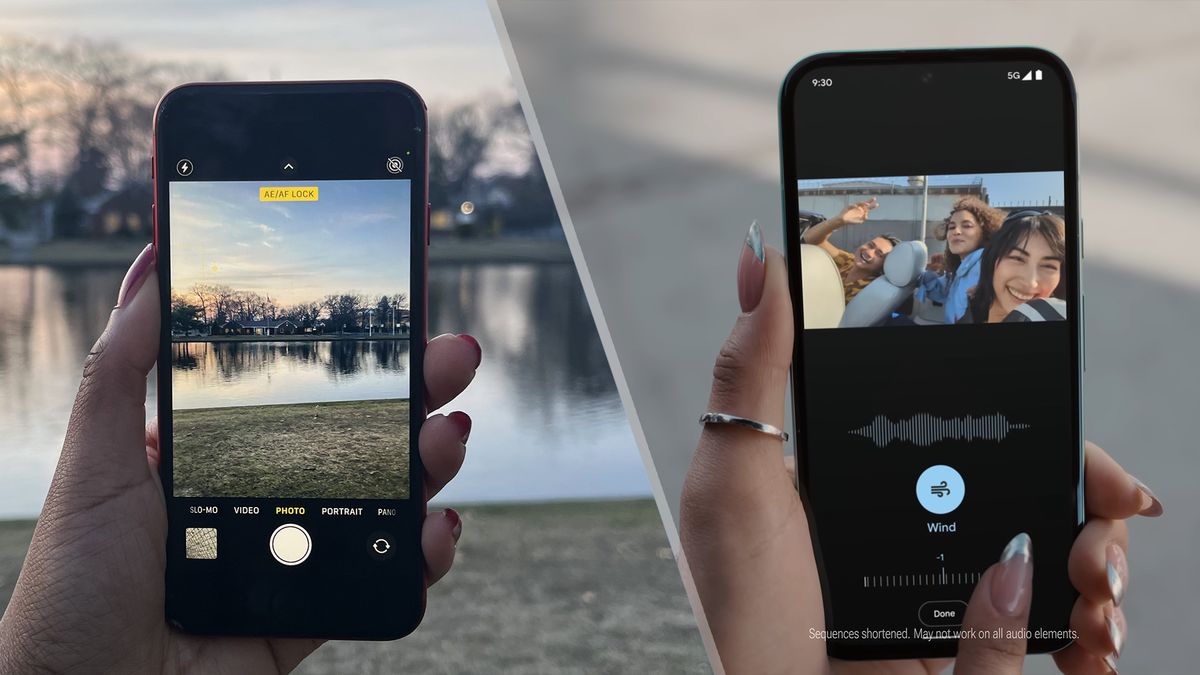
Metro by T-Mobile is rolling out a new set of plans that have it looking a little more like an old-school wireless service, thanks to the lure of free phones if you bring your number from another service and stay around long enough.The new Flex lineup from Metro, announced Tuesday, starts with the same prices and data allocations as the unlimited plans they replace. Flex Start, at $50 a month after you enable autopay or $55 otherwise, includes unlimited on-phone data and 8GB of mobile hotspot use, while Flex Up, $60 or $65 without autopay, ups the mobile-hotspot quota to 25GB.Both Flex Start and Flex Up throw in a 100GB Google One subscription, normally $19.99 a year, that matches a freebie on Metro’s older plans; the latter also matches the old $60 plan’s extra of free texting to “210+ countries and destinations.” Then there’s Metro’s new $70 Flex Plus option, which extends Up to add a free Amazon Prime account. You can value that at $11.58/month value at the retail giant’s $139/year rate, at least until Amazon ratchets up that price again. Here, Metro is returning to an older incentive. When T-Mobile renamed it from MetroPCS in 2018, five years after buying the company, it comped a Prime subscription on its most expensive plan. All three plans tout not only free phones for customers who port over a number but also free phone upgrades for all customers starting at 12 months after they sign up. T-Mobile contrasts that with the common practice at prepaid services of only giving a new subscriber a free phone, after which customers don’t get a discount.“We call it a loyalty tax,” Jon Freier, president of T-Mobile’s consumer group, said in a call. “What we’ve done is just decided to put an end to that.” The menu of free phones for switchers varies with the flavor of Flex they choose but doesn’t go beyond the affordable end of the smartphone spectrum. Flex Start offers a free Revvl 7 (the latest Android phone from T-Mobile’s in-house brand, which we liked when we reviewed the Revvl 5G in 2020), TCL 50XL, or Moto G 5G; Up holds out a Revvl 7 Pro, Samsung A15 5G, Moto G Power, and Nokia G310; the free options at Plus are a Moto G Stylus, iPhone 11, and Samsung A35.This offer doesn’t require a credit check, Frier said; porting over a number and presenting an ID will suffice.The free-upgrade options for all Flex customers start with just the Revvl 7, TCL 50XL, and Moto G 5G after a year and then expand after two and then three years. But while the published list includes such three-years-from-now possibilities as a free iPhone 12, think of those as placeholders for whatever older or cheaper smartphone would slot into that price bracket by 2027.Note also that Metro locks phones it sells for the first 365 days (with a waiver for military personnel pending deployment overseas), so taking advantage of these offers will rule out renting a cheap eSIM for international travel until a year after you opt in. If that could be a problem, buy an unlocked phone. If you bring it to a Metro store, that qualifies you for a $25, with autopay, BYOD (bring your own device) plan with unlimited on-phone data and 5GB of mobile hotspot use.Metro also continues to sell a $30 after-autopay plan that offers 5GB of data.
Recommended by Our Editors
Shoppers looking to get service on T-Mobile’s network for lower prices than its postpaid plans without giving up such T-Mo add-ons as its suspected-scam-call blocking should compare these rates to those at T-Mobile’s eponymous prepaid service and at Mint Mobile, which T-Mobile completed buying two weeks ago. Asked how Metro fits into this expanded roster of prepaid options, Freier answered in terms of how long customers want to sign up and where they want to meet the service.T-Mobile Prepaid, he said, is for “very transactional” customers looking for short-term connectivity, such as international travelers to the US. Mint, meanwhile, aims for longer-commitment customers with rates that drop dramatically for customers who prepay for a year at a time. But its lack of stores means those customers have to want to “interact with their brand 100% digitally,” Freier continued.And Metro, with some 6,300 local stores, is for old-school customers looking for both a longer commitment and a local presence; it’s also why Metro stores sell a Metro-branded version of T-Mobile’s home 5G broadband. Freier’s summary of that customer mindset: “I want a store, I want to see someone.”
Like What You’re Reading?
Sign up for Fully Mobilized newsletter to get our top mobile tech stories delivered right to your inbox.
This newsletter may contain advertising, deals, or affiliate links. Subscribing to a newsletter indicates your consent to our Terms of Use and Privacy Policy. You may unsubscribe from the newsletters at any time.






